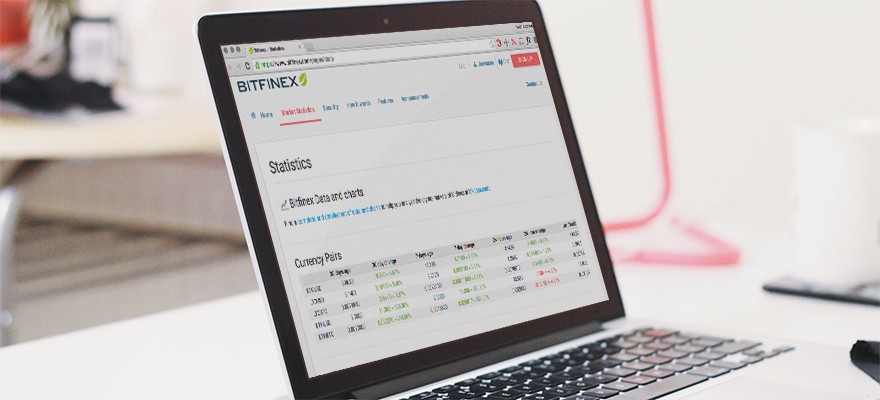As the value of bitcoins dramatically rose near the end of May 2016, it tested other related markets such as the margin funding market on Bitfinex. Bitfinex is a digital currency exchange where users can trade USD, BTC, LTC, and Ether pairs. What makes Bitfinex revolutionary and unique is how users also fund their own margin loans in an open market. Having users make the market for their own margin means that the exchange doesn’t take on any any practical day to day credit risk associated with margin trading. This makes the exchange more resilient to credit risk and allows it to focus on its core function as a clearinghouse for transactions. Anyone who is interested in digital currencies should learn how the Bitfinex system works and explore the exchange operations.
With its revolutionary market mechanism, Bitfinex has exposed other interesting areas of finance. Since the exchange does not get involved in setting prices for currencies or margin loans, the market has grown organically. What caught my attention when I first started using the system is the different rates of interest being charged for margin loans of the various currencies. Since traders can borrow in any of the four listed currencies, and make exchanges relatively easy, at first I figured the rates of interest for each currency should be similar. Because there is very little transaction costs of exchanging one currency for the other. I figured if the rate of interest on offer is much different between the currencies, then the market would naturally converge. Either supply and/or demand for margin loans would shift based on the different rates of returns and converge to levels close together.
But this convergence of interest rates is not occurring. The interest rate on USD margin loans is consistently much higher than the rate for BTC, LTC, or Ether. For example, the rate on USD is currently 30.07% APR, whereas the rate for BTC is 1.93% APR, LTC is 3.91% APR, and Ether is 7.19% APR. So the USD rate is HUGE! Not just in relative terms compared to other USD interest rates, but also relative to other rates for similar risks on the same system.
A few months ago, I couldn’t get my head around the different interest rates. I figured it would only be a matter of time until the rates converged. But they haven’t and I don’t think they will. Now I’ve come up with a few explanations. The Bitfinex system is populated by traders who I assume are bullish on bitcoin prices. I can’t imagine many traders who think bitcoin will fail or who don’t understand bitcoin would go to the trouble to open a Bitfinex account, fund it with bitcoins, and then take a bearish position. I’m sure its happening sometimes, but I think its more likely to assume most individual speculators on Bitfinex have a bullish bias for bitcoin. What keeps prices in check is the ability of market makers to arbitrage the Bitfinex prices with other exchanges such as OKCoin, etc. As long as it is easy to arb prices between platforms, there will be enough liquidity to fund speculator’s long bias.
So if traders on Bitfinex have a long bitcoin bias, then what happened to the margin funding market as the price for bitcoin was rising? Since traders are more likely to be borrowing USD to fund BTC long trades, there is a overwhelming amount of USD margin volume compared to the other currencies. As the price of bitcoin was rising dramatically, the USD margin funding supply practically ran out! In the days leading up to the bitcoin price rise, the rate for USD margin loans was pretty level at 14.60% APR, then volume of loans picked up, and rates started to jump as the supply of loans was used. By May 28th, the price for USD margin loans jumped to 107%, but then dropped to 36.5% a few hours later. During that evening as the price of bitcoin continued to rally, the rate went back to 137%, and then by May 29th, as the price for bitcoin went up 10% during one day and 20% within a few days, the USD rate for margin loans traded to a high of 202.95% APR.
During this massive spike in USD rates, the volume of loans dried up. On May 28th, as rates jumped to 137%, the volume funded at the time was $1.1 million USD. But as the rate went to an astonishing 202%, the volume of loans dropped to just over $106,000 USD. Personally, I was trying to get USD cash into the system as soon as possible to take advantage of the high lending rates. I was converting bitcoins on the system and funding USD loans. I also noticed from my own lending book during this time that traders started to return loans early and I had to put cash back to work. Without any data to back up my opinions, I got the sense there was a lot of position squaring going on at the top of the market. Either traders were taking profits and closing positions (thereby returning margin loans) or BTC loans were being returned (as traders got stopped out because of margin calls in the opposite direction).
Going forward, I’m going to continue developing my hedging strategy using Coinut and holding a balanced Bitfinex loan portfolio with some USD, BTC, LTC, and Ether loans. I think maybe a benchmark of mostly USD loans with some BTC, LTC, and Ether for some flexibility. I think creating some sort of investment policy statement would be helpful.
The website BFX Data is a valuable tool for any Bitfinex user as it displays various types of market data in easy to read formats. They’ve done all the API work that most casual users might need to analyze this market.





